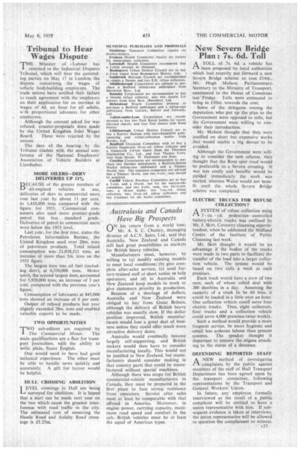Australasia and Canada Have Big Prospects
Page 75

If you've noticed an error in this article please click here to report it so we can fix it.
Crhis return from a world tour, Mr. A. S. C. Chattey, managing director of A.C.V. Sales, Ltd., said that Australia, New Zealand and Canada still had great possibilities as markets for British heavy vehicles. Manufacturers must, however, be willing to (a) modify existing models to meet local conditions; (b) give complete after-sales service; (c) send factory-trained staff at short notice to help operators: and (d) in Australia and New Zealand keep models in stock or give customers priority in production.
Because of a shortage of dollars, Australia and New Zealand were obliged to buy from Great Britain, although the delivery of British heavy vehicles was usually slow. If the dollar position improved, British manufacturers would lose a great deal of business unless they could offer much more attractive delivery dates.
Australia would eventually become largely self-supporting, and British makers would then have to consider manufacturing locally. This would not be justified in New Zealand, but manufacturers should consider making in that country parts that could be manufactured without special machines.
Although there was scope for British commercial-vehicle manufacturers in Canada, they must be prepared in the first place to face strong resistance from operators. Service after sales must at least be comparable with that offered in America. Moreover, in engine power, carrying capacity, maximum road speed and comfort in the cab, British vehicles must be at least the equal of American types.




















































































































































































































































